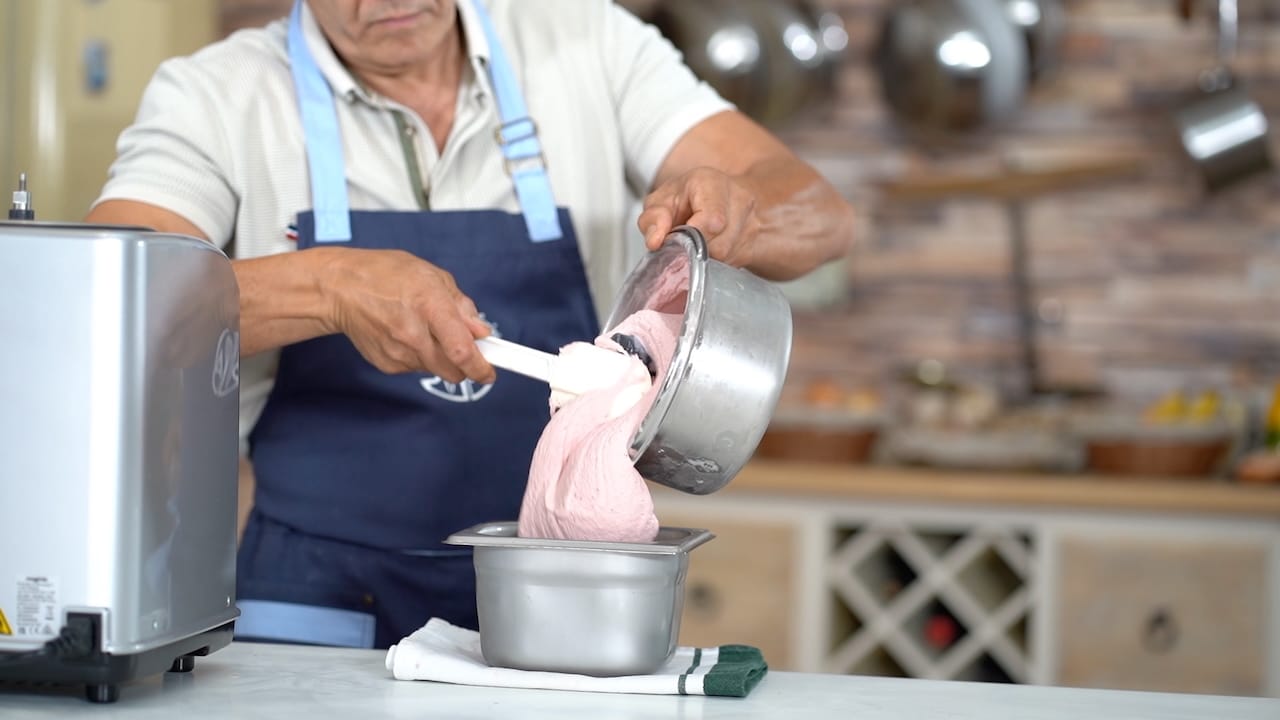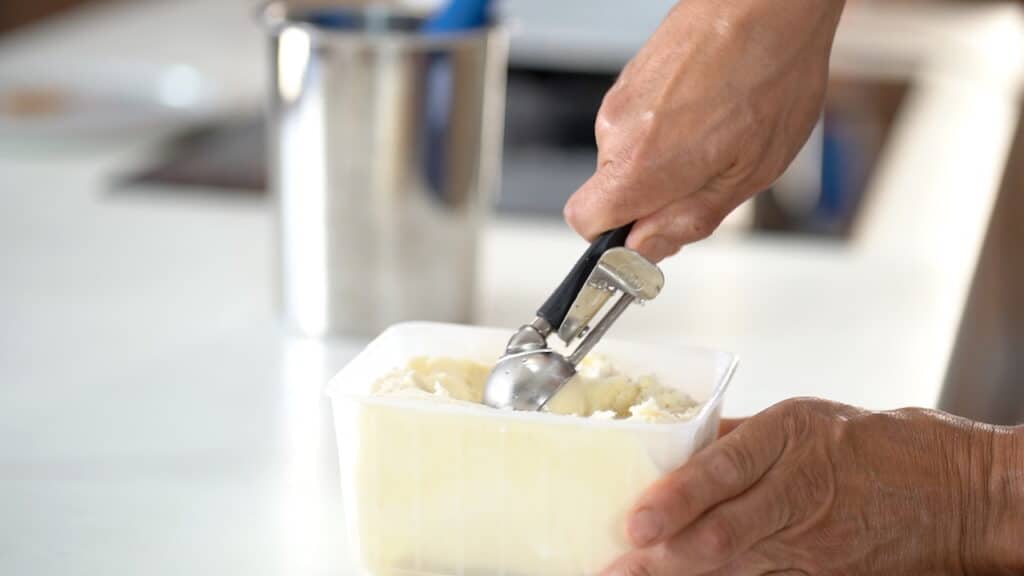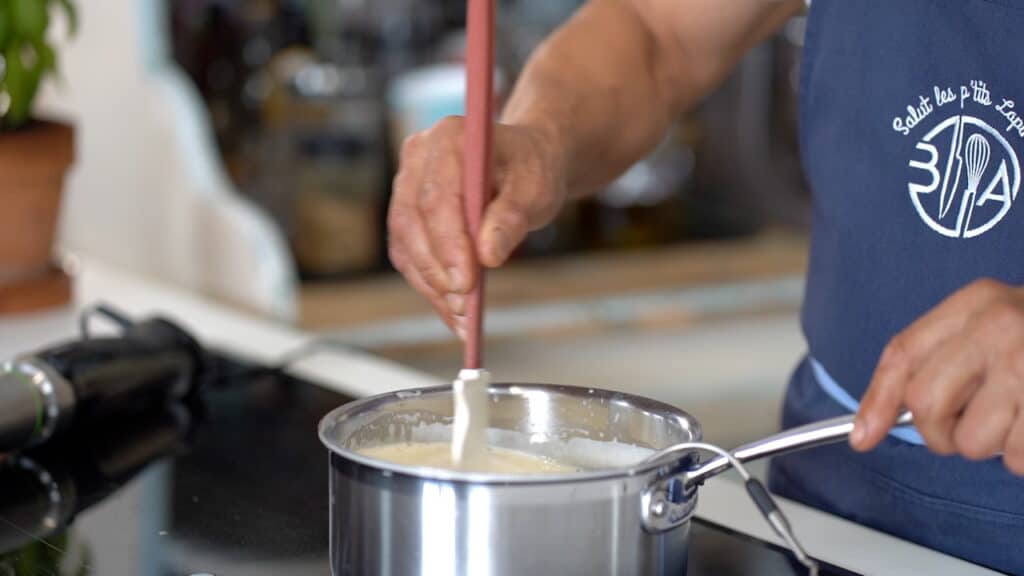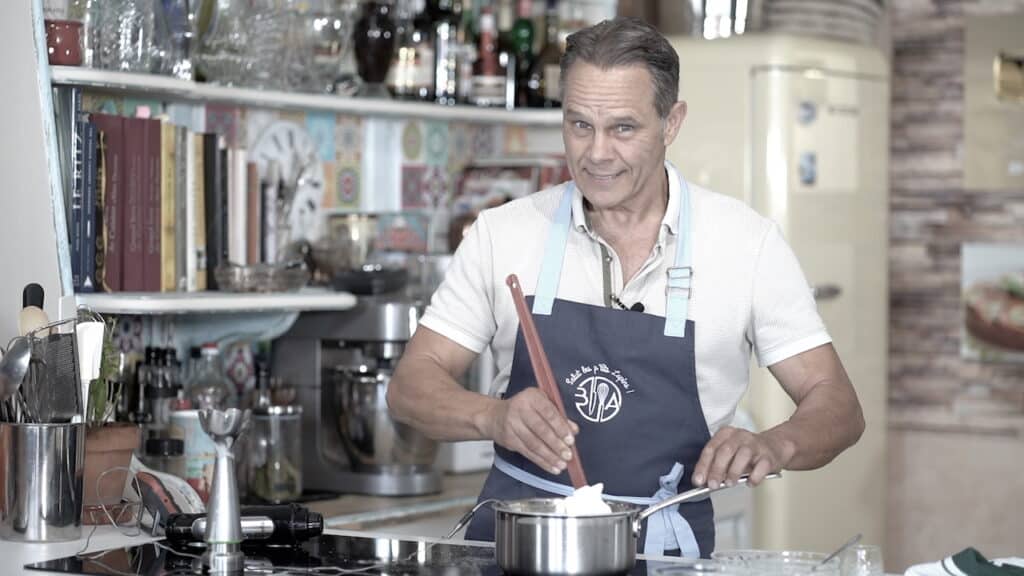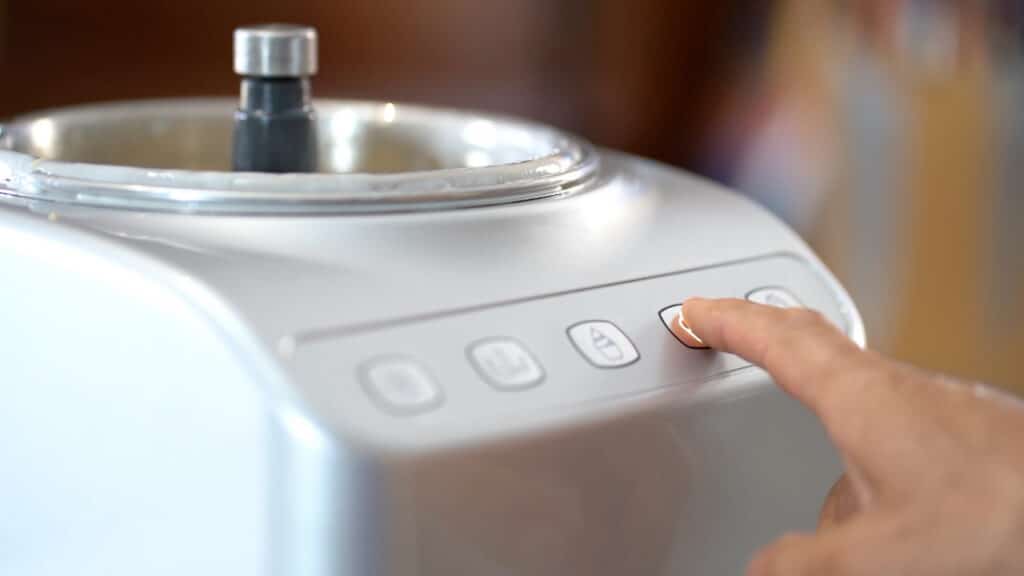Even with the best ingredients and equipment, ice cream can go wrong. Texture issues, flavor imbalances, or structural instability are common challenges in professional glacerie. As a chef, I’ve encountered all of them, and learned that most can be traced back to a handful of technical errors. In this article, I’ll walk you through the most frequent defects we see in ice creams and sorbets, explain what causes them, and share precise solutions to correct or prevent them.
Notice: This article is part of a comprehensive series dedicated to the craft of ice cream and frozen dessert making. We recommend reading the articles in the suggested order. You can find all eight articles in this series listed at the bottom of the page.
Icy texture: the enemy of creaminess
One of the most frequent complaints in ice cream is iciness. Instead of a smooth, velvety spoonful, the texture feels grainy or crystalline.
Causes:
- Low solids content (especially in sorbets)
- Excess water from fruit purée or juice
- Inadequate freezing (too slow or inconsistent)
- Poor hardening or temperature fluctuations during storage
Solutions:
- Increase total solids with milk powder, glucose syrup, or purée with higher Brix
- Use stabilizers like guar or locust bean gum to control water behavior
- Improve freezing speed with a properly chilled machine and rapid hardening
- Store ice cream at a stable -18°C and avoid frequent door opening
In sorbets, especially with acidic fruits, it’s essential to monitor water content and use a refractometer to reach the right Brix (typically 28 to 32).
Coarse or crumbly mouthfeel: when air and fat fail
Sometimes the ice cream looks okay but feels coarse or crumbly in the mouth, lacking that luxurious smoothness.
Causes:
- Poor emulsion due to low fat or absence of emulsifier
- Incomplete maturation
- Churning too fast or too slow
- Poor overrun control (too much or too little air)
Solutions:
- Ensure a fat content of at least 8 to 10 percent for cream-based ice creams
- Use egg yolks or mono- and diglycerides for better emulsification
- Always allow 4 to 12 hours of maturation before churning
- Calibrate your machine and monitor overrun to stay within your target (20 to 40 percent for gelato, up to 100 percent for American-style ice cream)
Texture is always a result of fat-air-water balance. When one element is out of tune, the entire structure suffers.
Melting too fast: unstable structure
Fast melt can ruin the consumer experience. You scoop, and it turns to soup in seconds.
Causes:
- Too much sugar (especially monosaccharides like dextrose or invert sugar)
- Low solids content
- Lack of stabilizer or incorrect stabilizer blend
- High alcohol content in the mix
Solutions:
- Rebalance sugar types to avoid excessive freezing point depression
- Add milk powder or other solids to improve body
- Use stabilizers that improve melt resistance (e.g. alginate, carrageenan)
- Keep alcohol below 3 percent and pair it with high Brix to offset its impact
Flavor is flat or unbalanced
You used great fruit or real vanilla, but the taste is weak or sharp. The problem is rarely the ingredient, it’s the formulation.
Causes:
- Overshadowing by sugar, dairy, or stabilizer
- Over pasteurization (especially with delicate aromas)
- Poor Brix or pH balance in fruit sorbets
- Artificial flavorings that lose potency in cold temperatures
Solutions:
- Adjust fat and sugar levels to let the main flavor shine
- Use gentle pasteurization for delicate ingredients
- Measure fruit pH and target 3.2 to 3.8 for freshness
- Add flavor post-pasteurization when possible
Always taste your mix before freezing, cold dulls perception, so a slightly exaggerated base flavor is ideal.
Inconsistent batches: when yesterday’s perfect becomes today’s mess
Even experienced chefs struggle with batch inconsistency.
Causes:
- Variable fruit quality or seasonal changes
- Inconsistent measurements or scaling errors
- Temperature shifts during pasteurization or storage
Solutions:
- Use standardized purées with consistent Brix and acidity
- Keep precise records for every batch
- Monitor and calibrate thermometers and timers regularly
Consistency comes from process control. It’s about discipline and documentation more than talent.
Precision prevents problems
Every defect in ice cream has a cause, and a solution. The key is to treat each part of the process with intention. Weigh with care, pasteurize correctly, balance your mix, and freeze fast. With every adjustment, you gain more control.
Perfection is not a mystery. It’s a method. And once you understand the science, every scoop you serve reflects not just flavor, but mastery.
In the final article, we’ll explore the professional side of glacerie, the equipment, lab organization, hygiene standards, and sourcing strategies that support daily production at the highest level.
